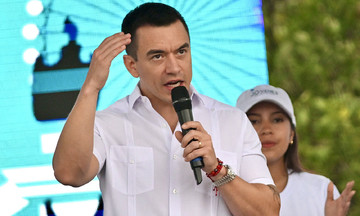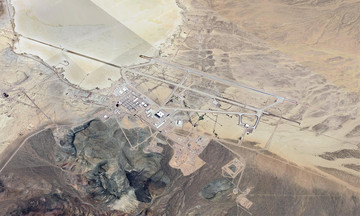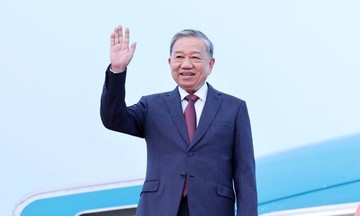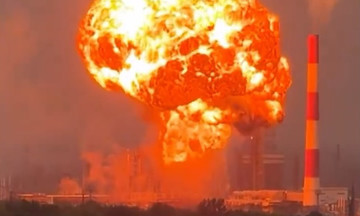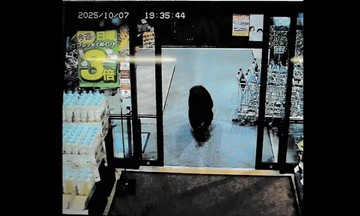Danish Prime Minister Mette Frederiksen on 23/9 described the drone incursion at Copenhagen Airport that paralyzed operations for several hours on the previous day as "the most serious attack on critical infrastructure ever." She said security agencies are investigating the perpetrators and have not ruled out Russian involvement, suggesting Moscow might be "testing Denmark's limits." "We have seen airspace incursions in Poland, Romania and Estonia. Several European airports were targeted by hackers last weekend. Now, drones have entered Danish and Norwegian airspace," she said.
Copenhagen police reported that 2-3 large drones were spotted near the airport on the night of 22/9. The drones repeatedly switched their lights on and off, loitered for several hours, and then vanished. Danish authorities believe the devices were operated by a "professional entity," possibly aiming to "demonstrate capabilities and cause disruption."
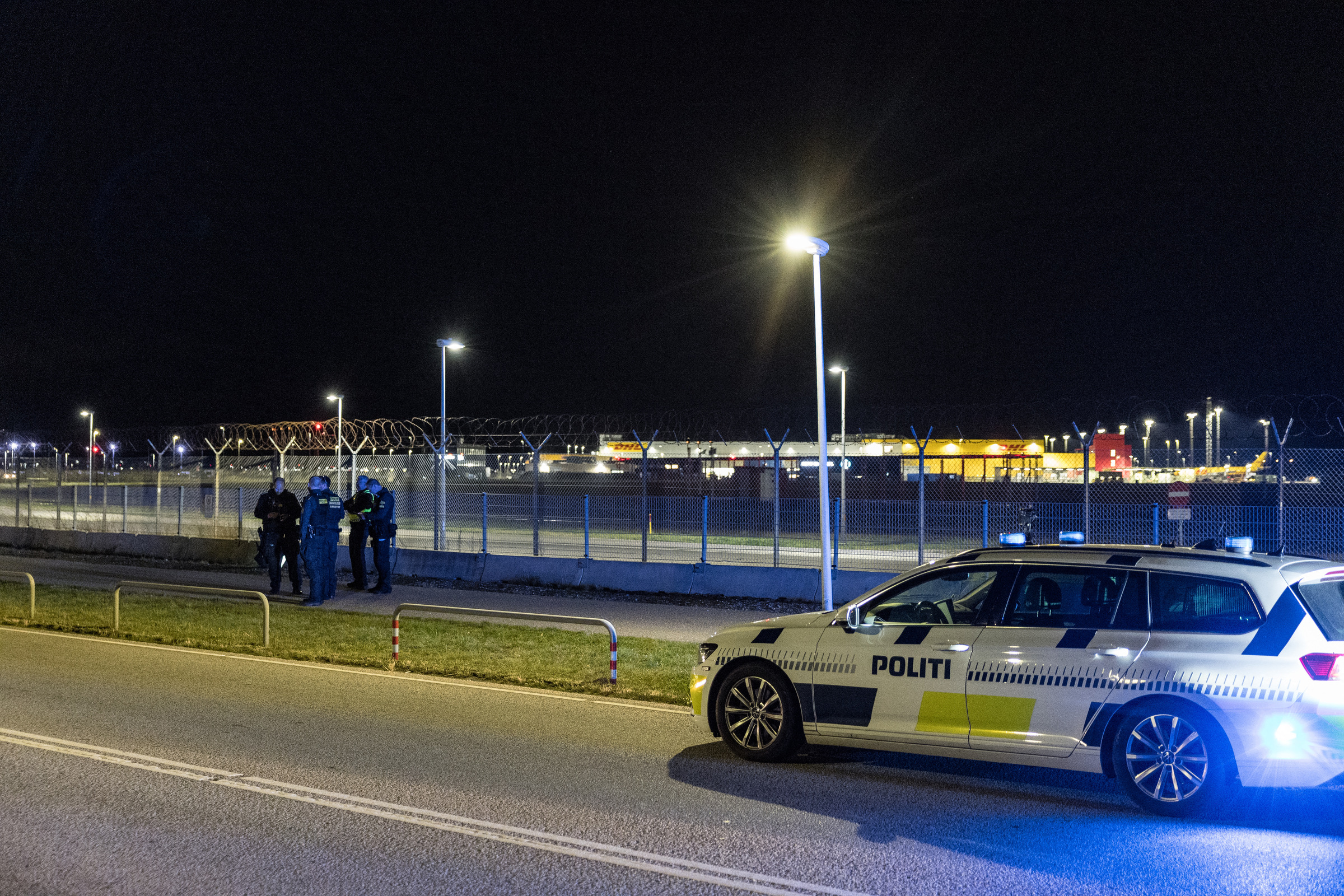 |
Danish police deployed to Copenhagen Airport on the night of 22/9. Photo: AFP |
Danish police deployed to Copenhagen Airport on the night of 22/9. Photo: AFP
The Danish military opted not to shoot down the drones due to safety concerns at the airport. Approximately 30,000 passengers were affected, with dozens of flights delayed or diverted.
Flemming Drejer, a leader at the Danish Security and Intelligence Service, suggested the perpetrators sought to escalate tensions and test Denmark's response. One theory under consideration is that the drones were launched from a cargo ship in the Baltic Sea.
On the same night, Oslo Airport in Norway was closed for about 3 hours due to two unidentified drones. Norwegian Prime Minister Jonas Gahr Store did not assign blame but noted that Norway had recorded 3 Russian aircraft violating its airspace this year, the first such incidents in over a decade.
Kremlin spokesperson Dmitry Peskov denied all accusations and criticized Prime Minister Frederiksen's statements as "baseless."
Both NATO and EU officials stated it was too early to determine who was behind the drone incursions in Denmark and Norway.
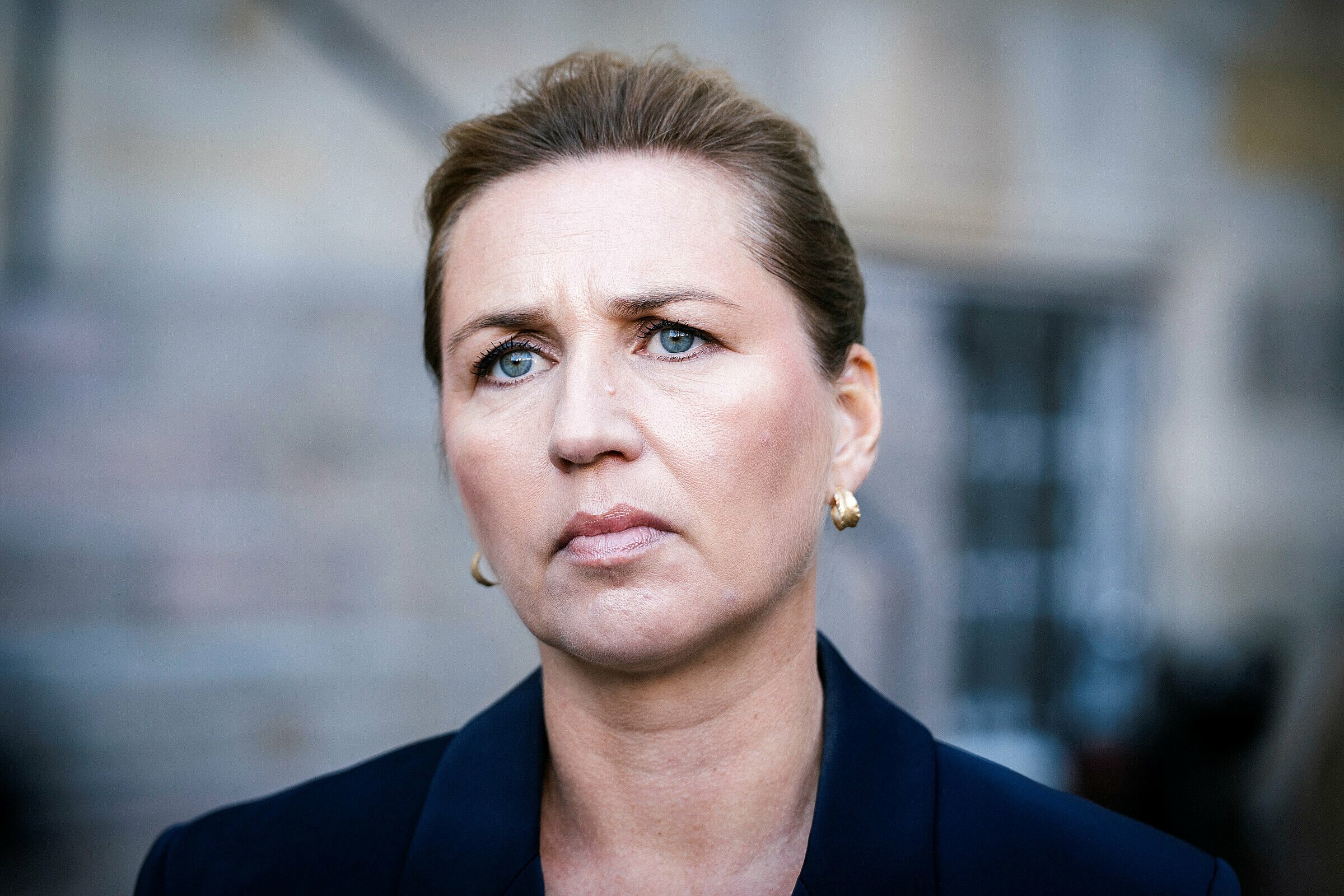 |
Prime Minister Frederiksen at Copenhagen Airport on 23/9. Photo: AFP |
Prime Minister Frederiksen at Copenhagen Airport on 23/9. Photo: AFP
Jacob Kaarsbo, a former expert at the Danish Defence Intelligence Service, believes the drones over Copenhagen Airport had a wingspan of about 2.5 m, were fixed-wing, and required a special launching mechanism. He suggested this tactic is similar to those used by Russian "ghost ships" for espionage and disruption, citing a similar incident off the coast of Germany.
The drone incident occurred just a week after Denmark announced the purchase of long-range weapons to counter the "threat from Russia" in the coming years. The Russian ambassador to Denmark criticized this move as "insane" and warned that Moscow might reassess bilateral relations.
Thanh Danh (According to AFP, Guardian)



